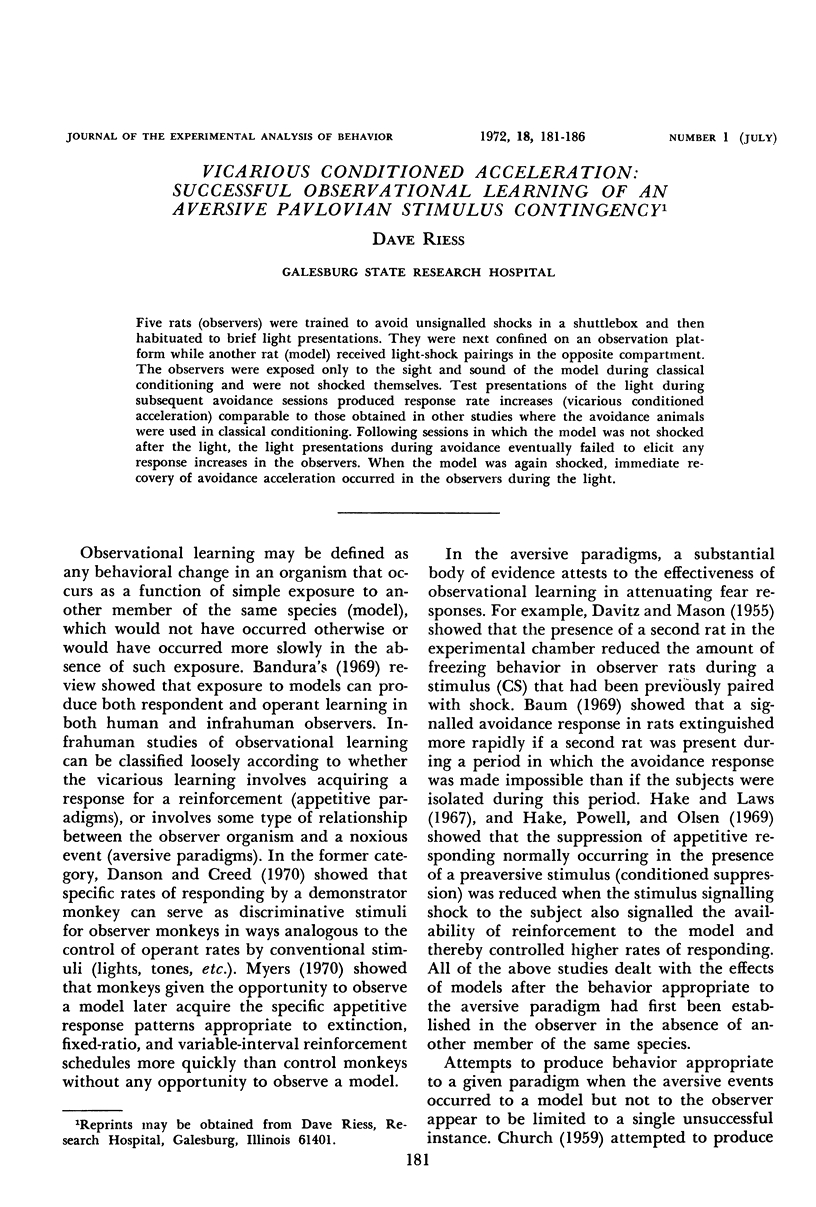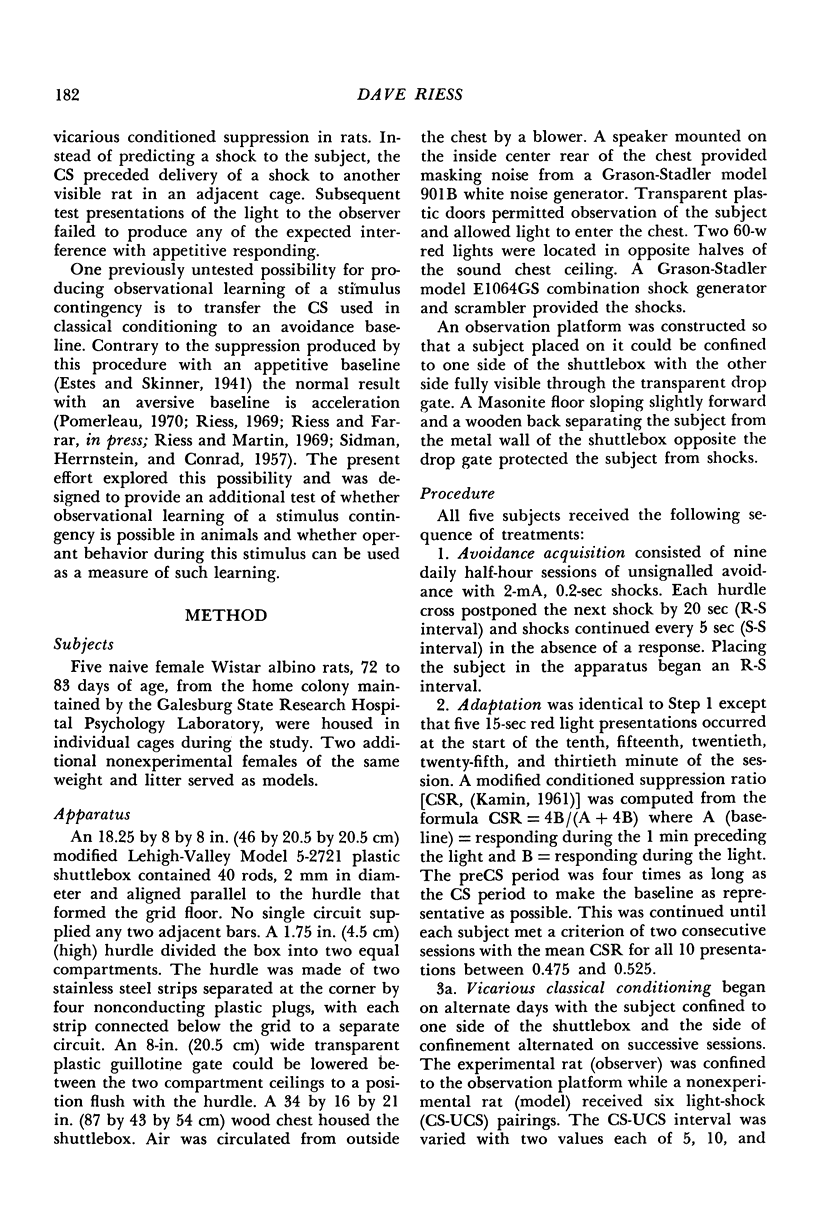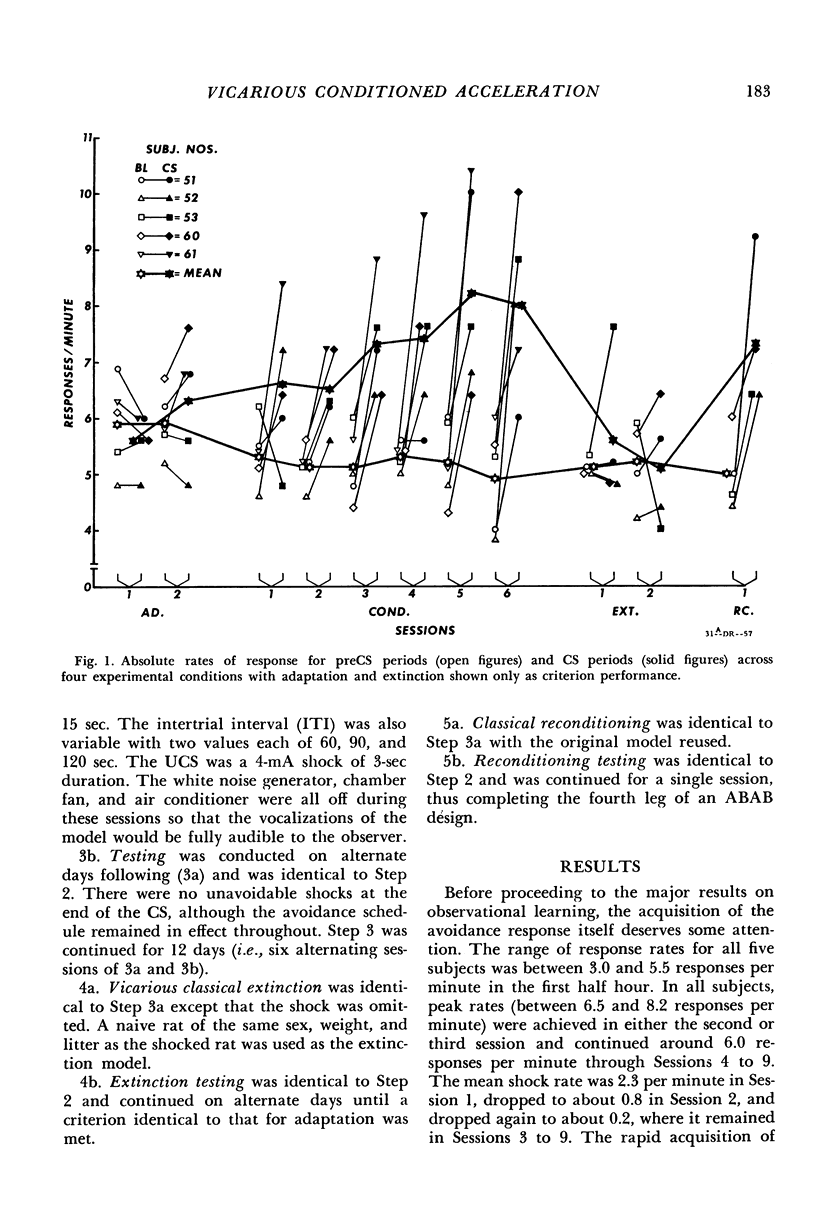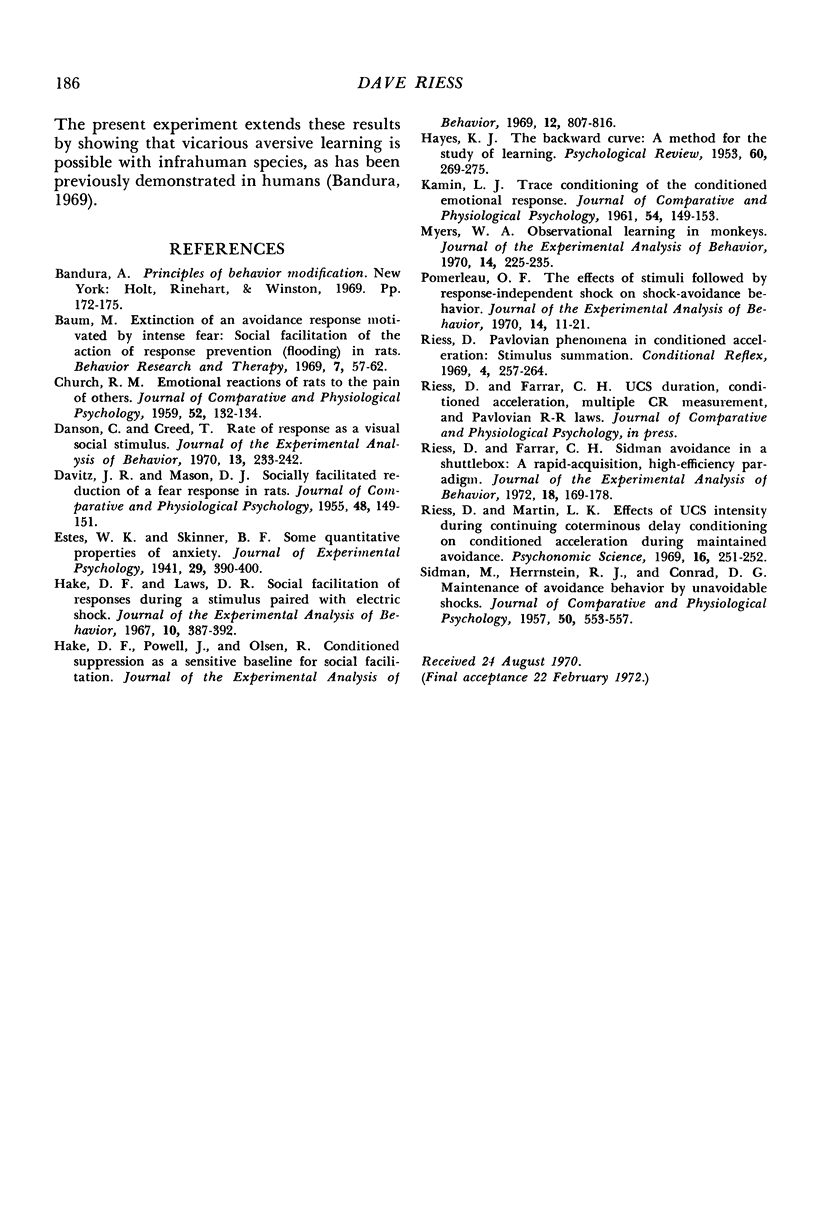Abstract
Five rats (observers) were trained to avoid unsignalled shocks in a shuttlebox and then habituated to brief light presentations. They were next confined on an observation platform while another rat (model) received light-shock pairings in the opposite compartment. The observers were exposed only to the sight and sound of the model during classical conditioning and were not shocked themselves. Test presentations of the light during subsequent avoidance sessions produced response rate increases (vicarious conditioned acceleration) comparable to those obtained in other studies where the avoidance animals were used in classical conditioning. Following sessions in which the model was not shocked after the light, the light presentations during avoidance eventually failed to elicit any response increases in the observers. When the model was again shocked, immediate recovery of avoidance acceleration occurred in the observers during the light.
Full text
PDF





Selected References
These references are in PubMed. This may not be the complete list of references from this article.
- Baum M. Extinction of an avoidance response motivated by intense fear: social facilitation of the action of response prevention (flooding) in rats. Behav Res Ther. 1969 Feb;7(1):57–62. doi: 10.1016/0005-7967(69)90049-7. [DOI] [PubMed] [Google Scholar]
- CHURCH R. M. Emotional reactions of rats to the pain of others. J Comp Physiol Psychol. 1959 Apr;52(2):132–134. doi: 10.1037/h0043531. [DOI] [PubMed] [Google Scholar]
- DAVITZ J. R., MASON D. J. Socially facilitated reduction of a fear response in rats. J Comp Physiol Psychol. 1955 Jun;48(3):149–151. doi: 10.1037/h0046411. [DOI] [PubMed] [Google Scholar]
- Danson C., Creed T. Rate of response as a visual social stimulus. J Exp Anal Behav. 1970 Mar;13(2):233–242. doi: 10.1901/jeab.1970.13-233. [DOI] [PMC free article] [PubMed] [Google Scholar]
- HAYES K. J. The backward curve: a method for the study of learning. Psychol Rev. 1953 Jul;60(4):269–275. doi: 10.1037/h0056308. [DOI] [PubMed] [Google Scholar]
- Hake D. F., Laws D. R. Social facilitation of responses during a stimulus paired with electric shock. J Exp Anal Behav. 1967 Jul;10(4):387–392. doi: 10.1901/jeab.1967.10-387. [DOI] [PMC free article] [PubMed] [Google Scholar]
- Hake D. F., Powell J., Olsen R. Conditioned suppression as a sensitive baseline for social facilitation. J Exp Anal Behav. 1969 Sep;12(5):807–816. doi: 10.1901/jeab.1969.12-807. [DOI] [PMC free article] [PubMed] [Google Scholar]
- KAMIN L. J. Trace conditioning of the conditioned emotional response. J Comp Physiol Psychol. 1961 Apr;54:149–153. doi: 10.1037/h0045611. [DOI] [PubMed] [Google Scholar]
- Myers W. A. Observational learning in monkeys. J Exp Anal Behav. 1970 Sep;14(2):225–235. doi: 10.1901/jeab.1970.14-225. [DOI] [PMC free article] [PubMed] [Google Scholar]
- Pomerleau O. F. The effect of stimuli followed by response-independent shock on shock-avoidance behavior. J Exp Anal Behav. 1970 Jul;14(1):11–21. doi: 10.1901/jeab.1970.14-11. [DOI] [PMC free article] [PubMed] [Google Scholar]
- Riess D. Pavlovian phenomena in conditioned acceleration--stimulus summation. Cond Reflex. 1969 Oct-Dec;4(4):257–264. [PubMed] [Google Scholar]
- SIDMAN M., HERRNSTEIN R. J., CONRAD D. G. Maintenance of avoidance behavior by unavoidable shocks. J Comp Physiol Psychol. 1957 Dec;50(6):553–557. doi: 10.1037/h0043500. [DOI] [PubMed] [Google Scholar]


